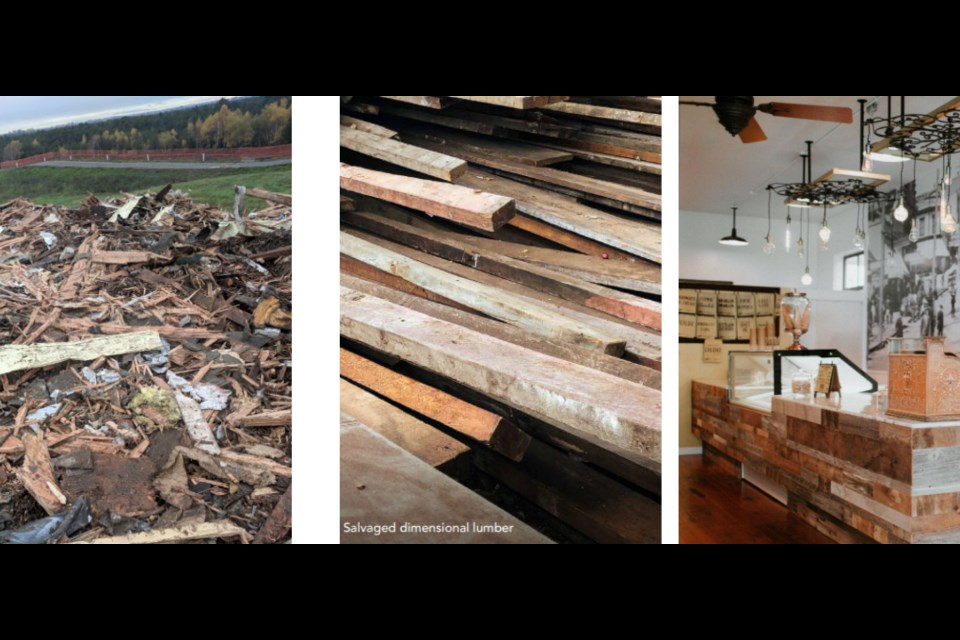A small step has been made in reducing one of the largest sources of waste that leaves the North Shore and ends up in landfills.
On Monday (June 16), District of North Vancouver council voted unanimously to pass a bylaw that will require people demolishing homes built before 1950 to salvage a set amount of wood.
As of January 2023, qualifying teardowns will necessitate a one-page wood salvage estimate, a $250 admin fee and a $15,000 deposit that’s fully refunded if the requirements are met.
A total of 3.5 kilograms, or 2.6 board feet, of lumber will have to be reclaimed per square foot of floor space. For a 2,000-square-foot home, that’s seven tonnes of salvaged wood. In a presentation, district staff said the amount is based on industry case studies reviewed locally or in the U.S.
Varying degrees of salvage requirements exist in other nearby municipalities, including Port Moody, Vancouver, Richmond, New Westminster, Surrey and Victoria. Staff said the City of North Vancouver is considering demo regulations as part of its environment strategy, while the District of West Vancouver has no such plans.
In February, North Van district council directed staff to start stakeholder consultation on rules to reduce waste from demolitions, which accounts for around a third of total waste now going to landfills.
The new salvage bylaw has the goal of waste reduction, with co-benefits of also reducing resource consumption and emissions in a more circular economy. Wood is being targeted specifically, as it makes up the lion’s share of demolition waste, and materials like concrete and steel are more often recycled already.
Pre-1950 single-family homes are the current target because they’re made from materials that are easier to separate compared to more modern construction. According to staff, around 100 demolition permits for single-family homes are issued a year, and a smaller subset of those would qualify under the new bylaw.
Consultation efforts revealed general support for the new regulations, with many in favour of increasing the number of homes required to reclaim materials during demos.
At Monday’s meeting, Mayor Mike Little mentioned that he’s served on Metro Vancouver’s solid waste committee for a long time, and this is one of the biggest issues.
“We obviously put a lot of energy into single-use reductions,” he said. “But they amount to a relatively small percentage of the waste stream that we have.”
Little described the new bylaw as “just a start” – affecting only around 20 per cent of demolished houses a year. Overtime, he said, it would need to capture more housing stock.
“Really, this is the start of us talking about real deconstructability: making sure the new houses we’re building are constructed from materials that can be adequately deconstructed and avoid the waste stream entirely,” Little said.
Coun. Megan Curren asked staff why the plan wasn’t more aggressive off the bat.
District climate action manager Caroline Jackson explained that it’s easier to recover materials from older homes, and that market readiness of service providers isn’t yet up to speed.
After the new bylaw goes into place, staff will monitor the program with the intention of increasing the qualifying housing stock over time.



